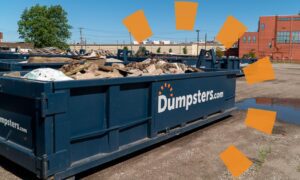As the CEO & Co-Founder of Procure Ai, my experience in procurement has been marked by a crucial realisation: in enterprise companies, procurement is often underutilised in terms of data-driven and automated processes. The recent crisis at the Panama Canal, characterised by severe drought leading to the lowest water levels since the mid-1900s, is a stark reminder of the fragility of global supply chains. This event is not just a canal issue; it’s indicative of a broader unpreparedness in the face of supply chain disruptions.
This crisis serves as a wake-up call. The significant delays and financial losses emphasise the need for more resilient and adaptable supply chain strategies. We’ve seen this before – the Suez Canal blockage had a profound impact on international trade, creating bottlenecks and delays across numerous industries. The Covid-19 pandemic disrupted logistics and supply chains worldwide, highlighting the lack of robust contingency plans. Further back, the Fukushima Nuclear Plant disaster in 2011 severely affected the electronics and automotive industries due to supply shortages of key components from that region in Japan. Additionally, the US-China trade war posed significant challenges for procurement teams, who needed to navigate the complexities of higher tariffs. Geopolitical risks are everywhere.
Through conversations with procurement professionals and workshops we have held with major companies, it’s become abundantly clear that the use case for AI has yet to be fully realised, as has the potential of data and automation in transforming procurement processes. We now have the technology to leverage Large Language Models (LLMs) like ChatGPT, once reserved for copywriters and marketers, to simplify the procurement process through the interpretation of free-text requisitions and eliminating the need for complex forms. Before predicting supply chain issues, it’s important to get your house in order, and this technology can help a business streamline order management and significantly enhance efficiency.
So, is there a crystal ball that lets us peer into a dystopian future where climate disasters may become the norm? Well, yes. AI and LLMs are particularly adept at predictive analysis, especially in situations of global supply chain disruptions. This foresight from AI, critical in navigating economic crises, also plays a pivotal role in situations like the global chip shortage. Here, AI’s predictive analysis proves invaluable in managing procurement challenges. As highlighted in a study by McKinsey, “manufacturers are firefighting” to cope with uncontrolled spending in procurement and the challenge of finding reliable suppliers. In this context, AI’s power lies more in impact mitigation than in forecasting disruptions. AI analysis of patterns and prediction of potential supply chain bottlenecks enables companies to proactively adjust their procurement strategies, thereby minimising the risk and impact of such disruptions.
The situation in Panama underscores the need for businesses to develop contingency plans in procurement. Plan A is not enough, and Plan B is never a given. By unifying analytics and analysing procurement and supply chain data, platforms like ours optimise and fortify these processes, making them more resilient to crises. Augmenting procurement with advanced AI capabilities is essential, not only as a technological advancement but as a strategic foundation for a resilient and proactive procurement future.
These events highlight the critical need for procurement leaders to shift from a reactive to a proactive stance, harnessing AI to navigate the volatility of global supply chains. Big enterprises must address the limitations of legacy systems, embracing AI to enhance procurement strategies with data-driven insights, moving beyond human intuition to a more digitally-informed approach.
Navigating these challenges necessitates adopting AI and automation in procurement, transforming it from a mere innovation to the cornerstone of a strategic and resilient approach in global trade. AI and automation are not here to replace jobs but to augment and enhance them, making procurement strategies more intelligent and capable of managing the complex dynamics of today’s almost completely digital business environment.



































